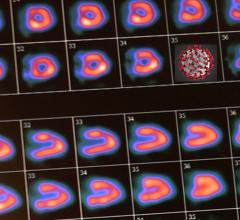
September 27, 2018 — Advancements in healthcare technology, particularly in the surgery category, have led to an increasing adoption of gamma cameras. Further, the numerous developments in radionucleotides are anticipated to favor the adoption of solid state cameras and mobile gamma cameras. These findings are presented in a new research study on the global mobile gamma cameras market by Future Market Insights (FMI).
Single photon emission computed tomography (SPECT) is currently the biggest application of gamma cameras given the low cost, large suite of radioisotopes and expanded use cases. According to FMI, however, positron emission tomography (PET) is anticipated to witness the fastest growth in terms of adoption, owing to the greater special resolution and sensitivity brought about by the use of positron emitting radioisotopes that provide more energy, contrast and special resolution.
According to FMI analysis, the high costs of PET as compared to SPECT are expected to be negated in the wake of development of high sensitivity and selective tracers. FMI predicts a growth rate of 4.8 percent for the mobile gamma cameras market during the 10-year period from 2018 to 2028. Revenue from the sales of mobile gamma cameras is estimated to reach $75.2 million by the end of 2028, up from $47.2 million in 2018.
Being a high-value, low-volume market, technology plays a vital role in the mobile gamma cameras market, where the technologically advanced products are priced at a premium. The development of solid state sensors is slowly replacing the photomultiplier tube and this represents the biggest technological development in the market followed by miniaturization.
A notable trend being observed in the market is the shift towards dual-head gamma cameras. Single-head mobile gamma cameras have certain inherent disadvantages such as slow speed and lower density count, leading to the inability to perform different types of tests. This has resulted in an elevated demand for multiple-head cameras. Dual-head cameras increase total counts per stop, resulting in relatively lesser scan time and better image quality, leading to enhanced accuracy in diagnosis.
Further, according to FMI, the latest mobile gamma cameras come with newer and better functionalities. Owing to advances in electronic components and software, modern mobile gamma cameras include advanced reconstruction algorithms and periodic updates that help boost scan speeds and image correction parameters. Advanced gamma camera software also facilitates more personalized patient scans by tracking patient activity and performing appropriate scans.
The full market intelligence outlook from FMI can be downloaded here.
For more information: www.futuremarketinsights.com


 August 03, 2023
August 03, 2023 








